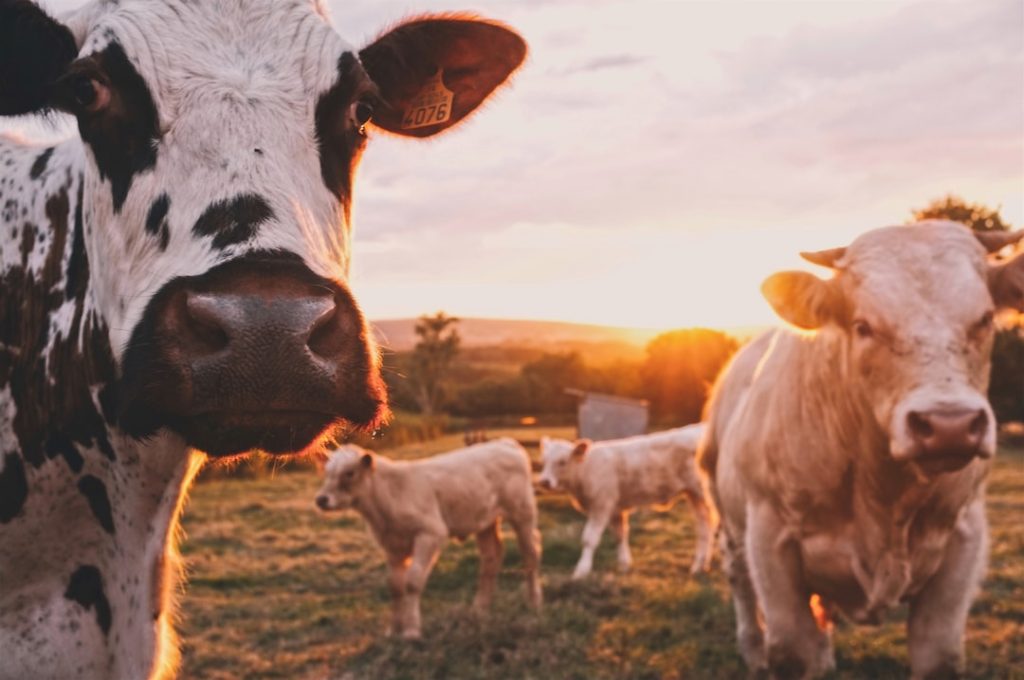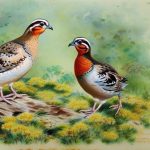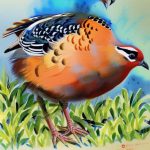Professional bobwhite quail breeding has a rich history that dates back to the early 20th century. The demand for quail hunting and the decline in wild quail populations led to the development of professional breeding programs. In the 1920s, several private breeders and game farms began to focus on breeding bobwhite quail for hunting purposes. These early breeders recognized the need for quality genetics and proper care to produce healthy and robust quail for hunting. Over time, the industry evolved, and professional bobwhite quail breeding capital became an essential part of the hunting and conservation efforts.
As the demand for quail hunting continued to grow, professional breeders invested in research and development to improve the genetics of their quail stock. This led to the establishment of specialized breeding facilities and the implementation of selective breeding programs to produce quail with desirable traits such as strong flight, good health, and high reproductive rates. Today, professional bobwhite quail breeding capital plays a crucial role in meeting the demand for quality quail for hunting while also contributing to conservation efforts to preserve the species.
Table of Contents
- 1 The Importance of Quality Genetics in Bobwhite Quail Breeding
- 2 The Role of Proper Nutrition and Environment in Bobwhite Quail Breeding
- 3 The Impact of Selective Breeding on Bobwhite Quail Population
- 4 The Economic Benefits of Professional Bobwhite Quail Breeding Capital
- 5 The Future of Bobwhite Quail Breeding and Conservation Efforts
- 6 The Challenges and Opportunities in Professional Bobwhite Quail Breeding Capital
- 7 FAQs
Key Takeaways
- Professional bobwhite quail breeding capital has a rich history dating back to the early 20th century, with a focus on improving genetics and breeding techniques.
- Quality genetics play a crucial role in bobwhite quail breeding, as they determine the health, vigor, and productivity of the birds.
- Proper nutrition and environment are essential for successful bobwhite quail breeding, as they directly impact the birds’ growth, reproduction, and overall well-being.
- Selective breeding has had a significant impact on the bobwhite quail population, leading to improvements in traits such as disease resistance, egg production, and meat quality.
- Professional bobwhite quail breeding capital offers economic benefits through the sale of birds, eggs, and hunting opportunities, contributing to local economies and conservation efforts.
The Importance of Quality Genetics in Bobwhite Quail Breeding
Quality genetics are essential in bobwhite quail breeding to produce healthy and robust quail with desirable traits. Professional breeders understand the significance of selecting breeding stock with superior genetics to ensure the offspring inherit favorable characteristics. Through careful selection and breeding, breeders can improve traits such as disease resistance, reproductive performance, and overall vitality in bobwhite quail populations. Quality genetics also play a vital role in maintaining genetic diversity within captive populations, which is crucial for the long-term sustainability of the species.
In professional bobwhite quail breeding capital, genetic improvement is achieved through rigorous selection criteria and the use of advanced breeding techniques. Breeders carefully evaluate individual quail for traits such as size, coloration, and behavior to identify superior breeding stock. Additionally, modern genetic technologies, such as DNA testing and pedigree analysis, are utilized to make informed breeding decisions and track genetic lineages. By prioritizing quality genetics, professional breeders can produce quail that meet the demands of hunters while also contributing to the conservation of wild quail populations.
The Role of Proper Nutrition and Environment in Bobwhite Quail Breeding
Proper nutrition and environment are critical factors in bobwhite quail breeding to ensure the health and well-being of the birds. Professional breeders understand the importance of providing a balanced diet that meets the nutritional needs of quail at different stages of development. High-quality feed, supplemented with essential vitamins and minerals, is essential for supporting optimal growth, reproduction, and overall vitality in quail populations. Additionally, access to clean water and suitable habitat is crucial for maintaining healthy quail populations in breeding facilities.
In professional bobwhite quail breeding capital, breeders prioritize creating an environment that mimics the natural habitat of quail to promote natural behaviors and reproductive success. This includes providing ample space for exercise, suitable nesting areas, and environmental enrichment to reduce stress and encourage natural behaviors. Furthermore, proper environmental management, such as temperature control and disease prevention measures, is essential for maintaining optimal breeding conditions. By focusing on proper nutrition and environment, professional breeders can ensure the well-being of their quail stock and contribute to the long-term success of their breeding programs.
The Impact of Selective Breeding on Bobwhite Quail Population
Selective breeding has had a significant impact on bobwhite quail populations by improving desirable traits and contributing to conservation efforts. Through selective breeding programs, professional breeders have been able to enhance traits such as size, reproductive performance, and disease resistance in captive quail populations. This has led to the production of robust quail stock that can thrive in both captive and wild environments. Additionally, selective breeding has played a crucial role in maintaining genetic diversity within captive populations, which is essential for the long-term sustainability of the species.
Furthermore, selective breeding has contributed to conservation efforts by providing a source of genetically diverse quail for reintroduction programs aimed at bolstering wild populations. By producing quail with strong genetics and desirable traits, professional breeders have been able to support efforts to restore quail populations in their natural habitats. Selective breeding has also played a role in research initiatives aimed at understanding the genetic basis of traits relevant to quail conservation. Overall, the impact of selective breeding on bobwhite quail populations has been instrumental in supporting both hunting interests and conservation efforts.
The Economic Benefits of Professional Bobwhite Quail Breeding Capital
Professional bobwhite quail breeding capital provides significant economic benefits through its contributions to the hunting industry and conservation efforts. The production of high-quality quail for hunting purposes generates revenue for breeders through sales of birds, guided hunts, and related services. Additionally, the demand for quality quail hunting experiences supports local economies by attracting hunters who spend on lodging, dining, and other recreational activities. This creates economic opportunities for communities where professional bobwhite quail breeding capital is established.
Furthermore, professional breeders play a vital role in supporting conservation efforts through their contributions to restoring wild quail populations. By producing genetically diverse quail stock for reintroduction programs, breeders contribute to the preservation of the species and its natural habitats. This has broader economic implications by supporting ecotourism and outdoor recreation associated with observing and hunting wild quail. Overall, professional bobwhite quail breeding capital not only provides direct economic benefits through hunting-related activities but also contributes to the broader conservation economy.
The Future of Bobwhite Quail Breeding and Conservation Efforts

The future of bobwhite quail breeding holds promise for continued advancements in genetics, nutrition, and environmental management to support sustainable populations. Professional breeders are likely to continue investing in research and technology to improve genetic selection methods and enhance desirable traits in captive quail populations. This will contribute to the production of high-quality birds for hunting while also supporting conservation efforts aimed at restoring wild quail populations.
Additionally, there is growing recognition of the importance of habitat conservation and management in supporting wild quail populations. Professional breeders are likely to collaborate with conservation organizations and land managers to promote habitat restoration initiatives that benefit both captive and wild quail populations. By addressing habitat loss and fragmentation, breeders can contribute to creating sustainable environments for quail to thrive.
The Challenges and Opportunities in Professional Bobwhite Quail Breeding Capital
Professional bobwhite quail breeding capital faces several challenges, including disease management, genetic diversity preservation, and market demand fluctuations. Disease outbreaks can pose significant risks to captive quail populations, requiring breeders to implement strict biosecurity measures and disease prevention protocols. Additionally, maintaining genetic diversity within captive populations presents ongoing challenges that require careful management through selective breeding programs.
However, there are also opportunities for professional bobwhite quail breeding capital to address these challenges through collaboration with researchers, conservation organizations, and industry stakeholders. Advancements in genetic technologies offer opportunities to improve selection methods and preserve genetic diversity within captive populations. Furthermore, increasing public awareness about the importance of sustainable hunting practices and conservation efforts presents opportunities for breeders to engage with a broader audience and promote the value of their work.
In conclusion, professional bobwhite quail breeding capital has a rich history rooted in the demand for quality quail for hunting purposes and conservation efforts. Through advancements in genetics, nutrition, and environmental management, breeders have been able to produce high-quality quail while contributing to the preservation of wild populations. The economic benefits of professional bobwhite quail breeding capital extend beyond hunting-related activities to support broader conservation efforts and local economies. Looking ahead, there are opportunities for continued advancements in genetics and habitat management that will support sustainable populations of bobwhite quail while addressing ongoing challenges in disease management and market demand fluctuations.
If you’re interested in professional bobwhite quail breeding, you may also want to explore the benefits of using the Producers Pride Sentinel Chicken Coop. This coop offers a secure and comfortable environment for your quail, ensuring their well-being and productivity. Check out this article to learn more about how this coop can enhance your quail breeding operation.
FAQs
What is professional bobwhite quail breeding capital?
Professional bobwhite quail breeding capital refers to a location or region that is known for its high-quality and professional breeding of bobwhite quail. This can include facilities, expertise, and resources dedicated to the breeding and raising of bobwhite quail for various purposes such as hunting, conservation, or commercial production.
What are the characteristics of a professional bobwhite quail breeding capital?
A professional bobwhite quail breeding capital is characterized by its expertise in breeding and raising bobwhite quail, access to suitable habitat for the quail, availability of necessary resources and facilities, and a strong network of professionals and organizations dedicated to the conservation and management of bobwhite quail populations.
What are the benefits of professional bobwhite quail breeding capital?
The benefits of a professional bobwhite quail breeding capital include the availability of high-quality bobwhite quail for hunting and conservation purposes, the preservation of genetic diversity within bobwhite quail populations, and the potential for economic opportunities related to the breeding and sale of bobwhite quail.
Where are some examples of professional bobwhite quail breeding capitals?
Examples of professional bobwhite quail breeding capitals can be found in regions with a strong tradition of quail hunting and conservation, such as parts of the southern United States including Texas, Georgia, and Alabama. These regions often have dedicated facilities, expertise, and resources for the breeding and management of bobwhite quail populations.
Meet Walter, the feathered-friend fanatic of Florida! Nestled in the sunshine state, Walter struts through life with his feathered companions, clucking his way to happiness. With a coop that’s fancier than a five-star hotel, he’s the Don Juan of the chicken world. When he’s not teaching his hens to do the cha-cha, you’ll find him in a heated debate with his prized rooster, Sir Clucks-a-Lot. Walter’s poultry passion is no yolk; he’s the sunny-side-up guy you never knew you needed in your flock of friends!







